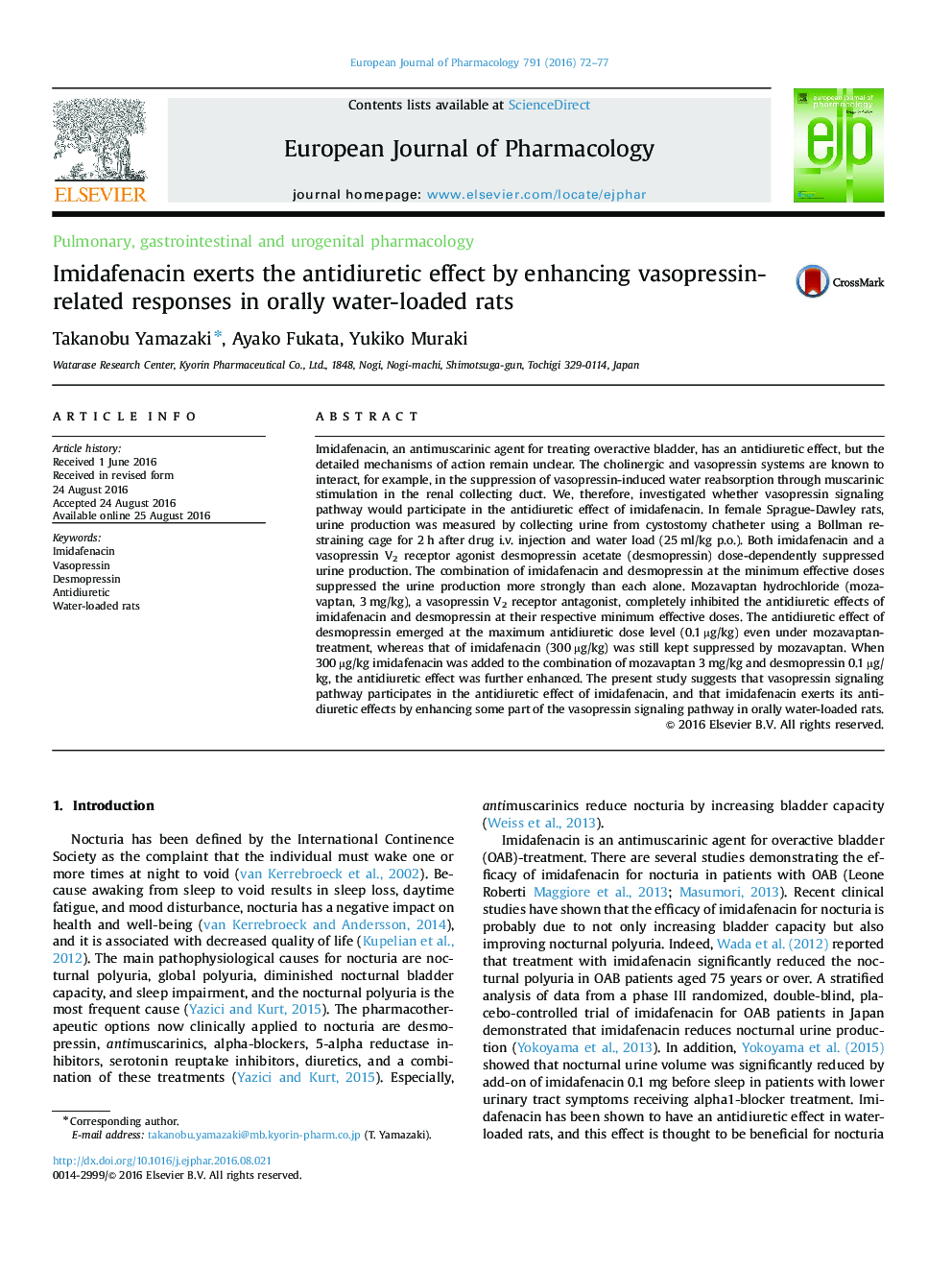| کد مقاله | کد نشریه | سال انتشار | مقاله انگلیسی | نسخه تمام متن |
|---|---|---|---|---|
| 2530799 | 1558889 | 2016 | 6 صفحه PDF | دانلود رایگان |
Imidafenacin, an antimuscarinic agent for treating overactive bladder, has an antidiuretic effect, but the detailed mechanisms of action remain unclear. The cholinergic and vasopressin systems are known to interact, for example, in the suppression of vasopressin-induced water reabsorption through muscarinic stimulation in the renal collecting duct. We, therefore, investigated whether vasopressin signaling pathway would participate in the antidiuretic effect of imidafenacin. In female Sprague-Dawley rats, urine production was measured by collecting urine from cystostomy chatheter using a Bollman restraining cage for 2 h after drug i.v. injection and water load (25 ml/kg p.o.). Both imidafenacin and a vasopressin V2 receptor agonist desmopressin acetate (desmopressin) dose-dependently suppressed urine production. The combination of imidafenacin and desmopressin at the minimum effective doses suppressed the urine production more strongly than each alone. Mozavaptan hydrochloride (mozavaptan, 3 mg/kg), a vasopressin V2 receptor antagonist, completely inhibited the antidiuretic effects of imidafenacin and desmopressin at their respective minimum effective doses. The antidiuretic effect of desmopressin emerged at the maximum antidiuretic dose level (0.1 µg/kg) even under mozavaptan-treatment, whereas that of imidafenacin (300 µg/kg) was still kept suppressed by mozavaptan. When 300 µg/kg imidafenacin was added to the combination of mozavaptan 3 mg/kg and desmopressin 0.1 µg/kg, the antidiuretic effect was further enhanced. The present study suggests that vasopressin signaling pathway participates in the antidiuretic effect of imidafenacin, and that imidafenacin exerts its antidiuretic effects by enhancing some part of the vasopressin signaling pathway in orally water-loaded rats.
Journal: European Journal of Pharmacology - Volume 791, 15 November 2016, Pages 72–77
